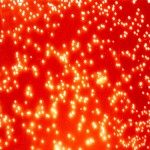Link to Pubmed [PMID] – 29141051
PLoS ONE 2017;12(11):e0187832
The prevalence of carbapenemase-producing Enterobacteriaceae (CPE) is increasing worldwide. Here we present associated patient data and molecular, epidemiological and phenotypic characteristics of all CPE isolates in Norway from 2007 to 2014 confirmed at the Norwegian National Advisory Unit on Detection of Antimicrobial Resistance. All confirmed CPE isolates were characterized pheno- and genotypically, including by whole genome sequencing (WGS). Patient data were reviewed retrospectively. In total 59 CPE isolates were identified from 53 patients. Urine was the dominant clinical sample source (37%) and only 15% of the isolates were obtained from faecal screening. The majority of cases (62%) were directly associated with travel or hospitalization abroad, but both intra-hospital transmission and one inter-hospital outbreak were observed. The number of CPE cases/year was low (2-14 cases/year), but an increasing trend was observed. Klebsiella spp. (n = 38) and E. coli (n = 14) were the dominant species and blaKPC (n = 20), blaNDM (n = 19), blaOXA-48-like (n = 12) and blaVIM (n = 7) were the dominant carbapenemase gene families. The CPE isolates were genetically diverse except for K. pneumoniae where clonal group 258 associated with blaKPC dominated. All isolates were multidrug-resistant and a significant proportion (21%) were resistant to colistin. Interestingly, all blaOXA-48-like, and a large proportion of blaNDM-positive Klebsiella spp. (89%) and E. coli (83%) isolates were susceptible in vitro to mecillinam. Thus, mecillinam could have a role in the treatment of uncomplicated urinary tract infections caused by OXA-48- or NDM-producing E. coli or K. pneumoniae. In conclusion, the impact of CPE in Norway is still limited and mainly associated with travel abroad, reflected in the diversity of clones and carbapenemase genes.

